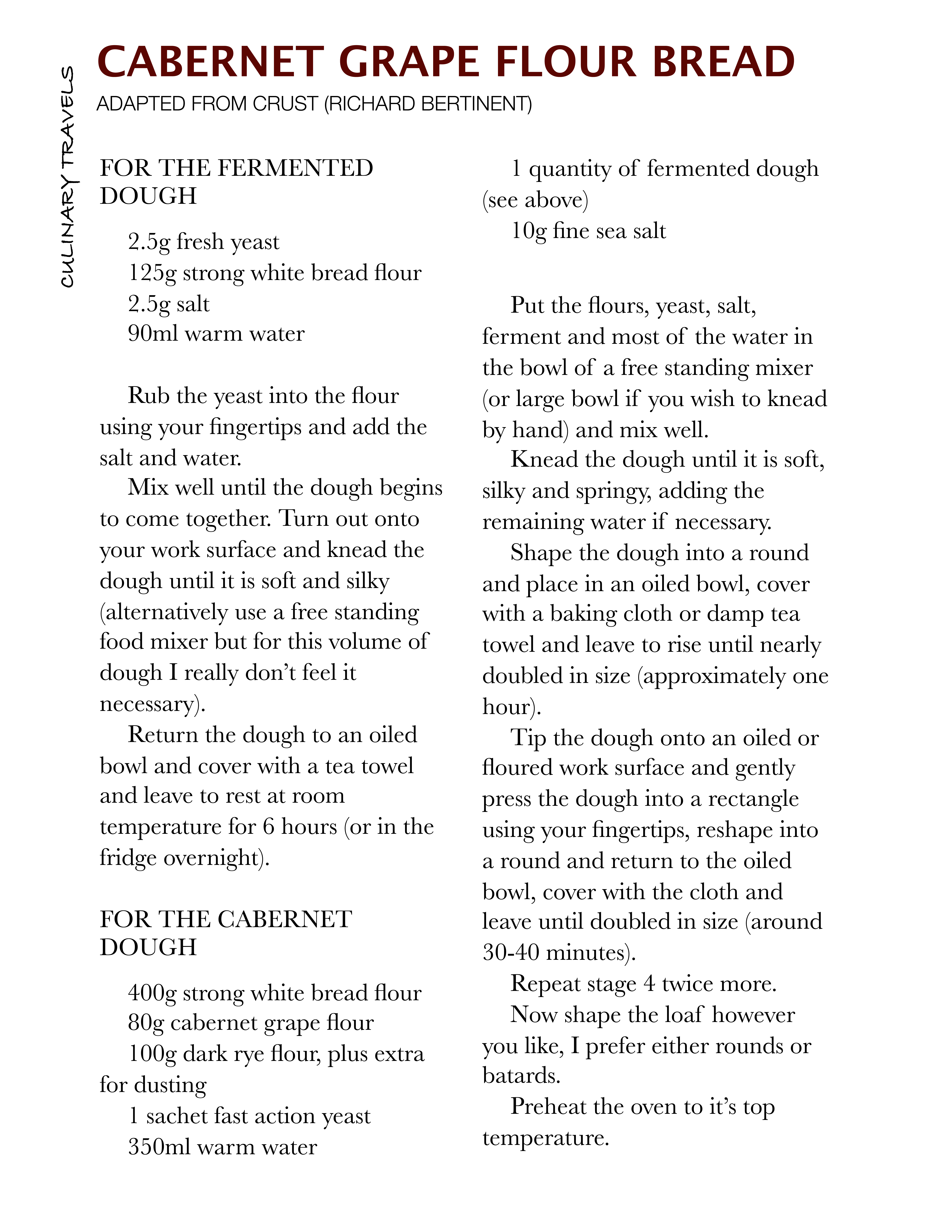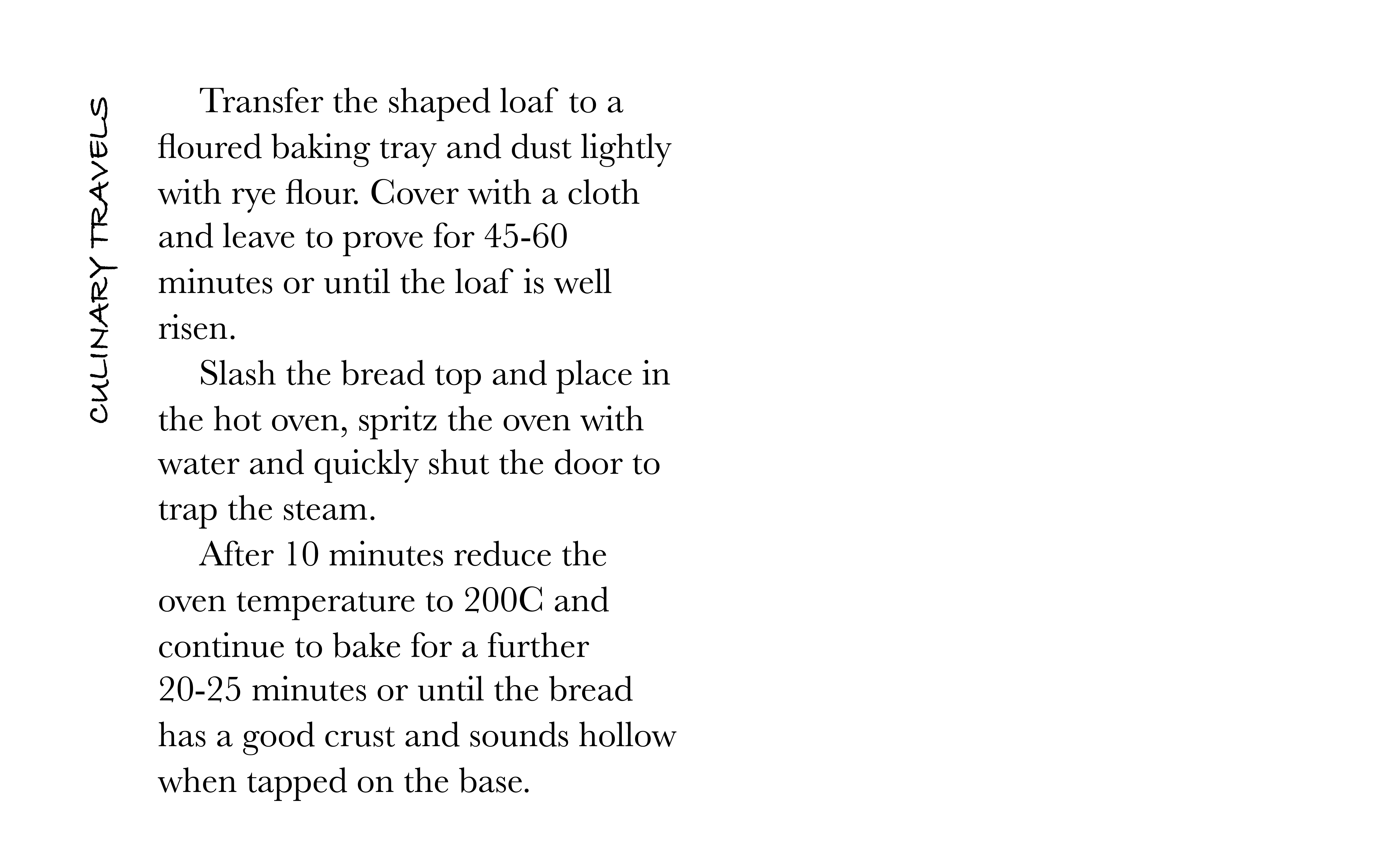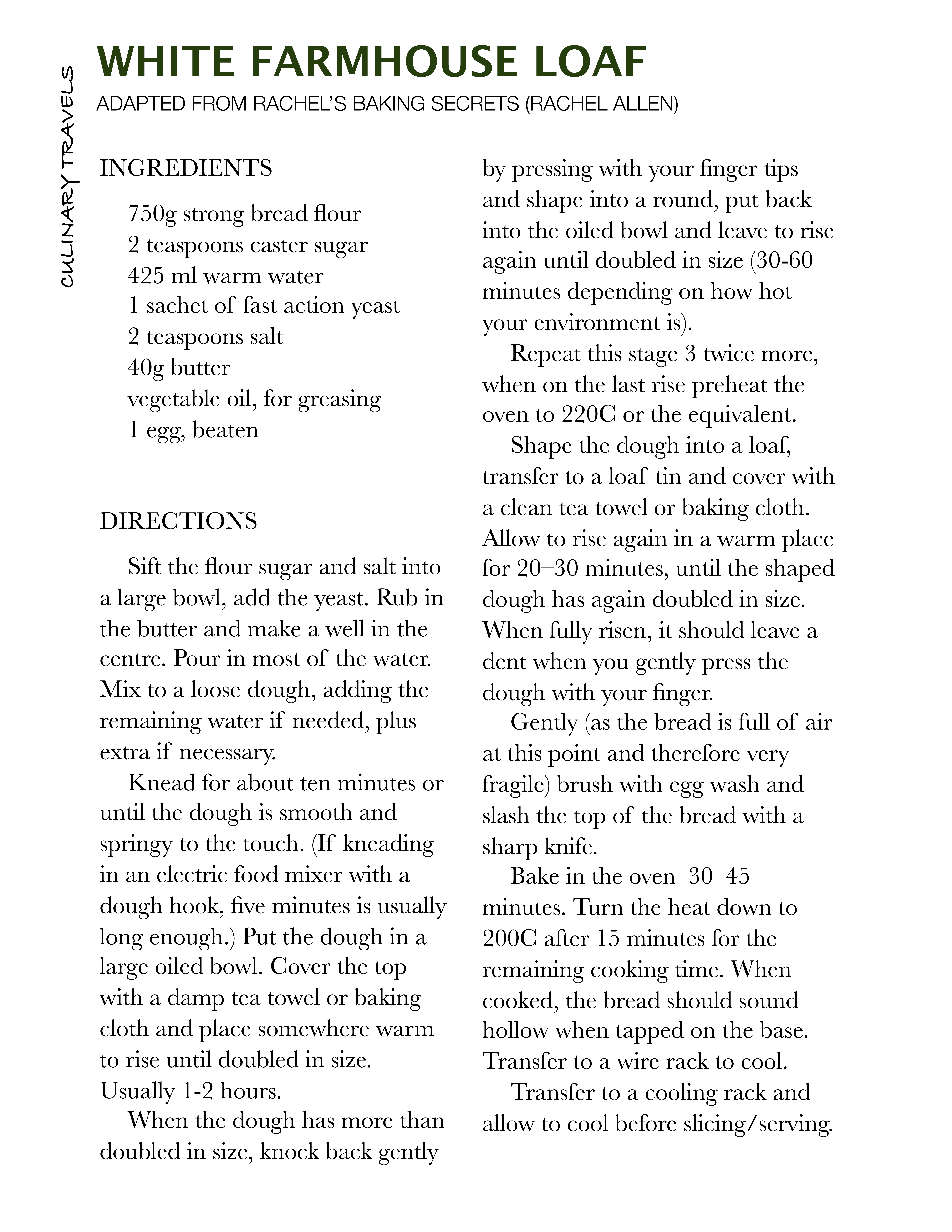
Richard Bertinet’s second book Crust: Bread to Get Your Teeth into is one I’ve spent a long time reading and no time (until a few days ago) baking from. I’m hanging my head in shame as it is a wonderful book, really informative and packed with drool worthy recipes aplenty. I berate myself for the lack of attention I have paid it; after all I did wax lyrical about his first book Dough: Simple Contemporary Bread: Simple Contemporary Bread here.
So anyway I finally made myself use the book after ordering plenty of goodies from his online shop, The Bertinet Kitchen. Not only can you buy lots of lovely baking goodies there but you can book onto one of Richard’s famous bread courses, oh my how I’d love to go – maybe I will one day.
So for my first Crust: Bread to Get Your Teeth into bake I decided on the Cabernet Grape Flour Bread, but I did make a couple of alterations to it. Firstly I adjusted the weight of the flours (keeping the total weight correct as per the original recipes) as I had to cut down on the amount of grape flour used – according to Richard’s website the current grape flour he is selling is a stronger version than the one available when the book was first written.
Cabernet grape flour is made as a by-product from the North American wine making industry, this powder can be mixed with flour to make breads, pastas and a host of other things besides; the bonus is it has the same antioxidant benefits as red wine but without the alcohol. More information can be found here. It is important to remember however that the grape flour is gluten free so consideration needs to be made to the percentages used in comparison to the wheat flours so as to get a dough with a good structure.
The other minor alteration to the recipe I made was to exchange the 50ml of red wine for water as I hadn’t a bottle of red available and I really didn’t see it as urgent to dash to the shop to buy some purely for this; although next time I make this if I have the wine available I will be sure to use it.
The resulting bread was not only glorious in its rich rustic purple colouring but in its deep slightly tannic flavouring also. The loaf yielded a soft, slightly chewy interior with a very chewy crust, giving great mouthfeel.
This bread really is a show stopper, just try presenting a loaf of this to your family or friends, you are bound to get a wow! Surely you’ll agree it just looks so vibrant and inviting.

As I wanted to serve the bread with a selection of mixed cheeses and salad, but also wanted some to keep for sandwiches the following day I thought I better make a more ‘basic loaf’ too, just in case the red loaf was a little too overpowering.
The ‘basic’ loaf I went for was Rachel Allen’s White Loaf from Rachel’s Baking Secrets: From Cookies to Casseroles, Fresh from the Oven which is really a typical UK tin loaf; in other words a farmhouse loaf which is brushed with egg wash instead of being dusted with flour.
The egg wash glaze gives a lovely shine to the finished loaf and a lovely crisp crunch too, the kind that makes you want to leave the ‘top crust’ until last just so as you can savour it.
I must note here that I didn’t follow the specified methods for rising and proving the bread in either recipe, instead I went for Daniel Steven’s multi-rise method, which I have probably twittered enough about but I just have to say it again, allowing the bread to rise more than once (up to four times) gives for softer, lighter bread with a better ability for keeping. I wouldn’t dream of using any other method now.
The breads will be entered to YeastSpotting, hosted by Susan of the fabulous blog Wild Yeast.










What Our Followers Say
"Oh yum!!! I could eat one or two right now!"
Sami Tamimi
"Such a beautiful pic!"
Nigella Lawson
Our list of things to do in Cork has just expanded hugely thanks to Culinary Travels.
Triskel Art Centre Cork